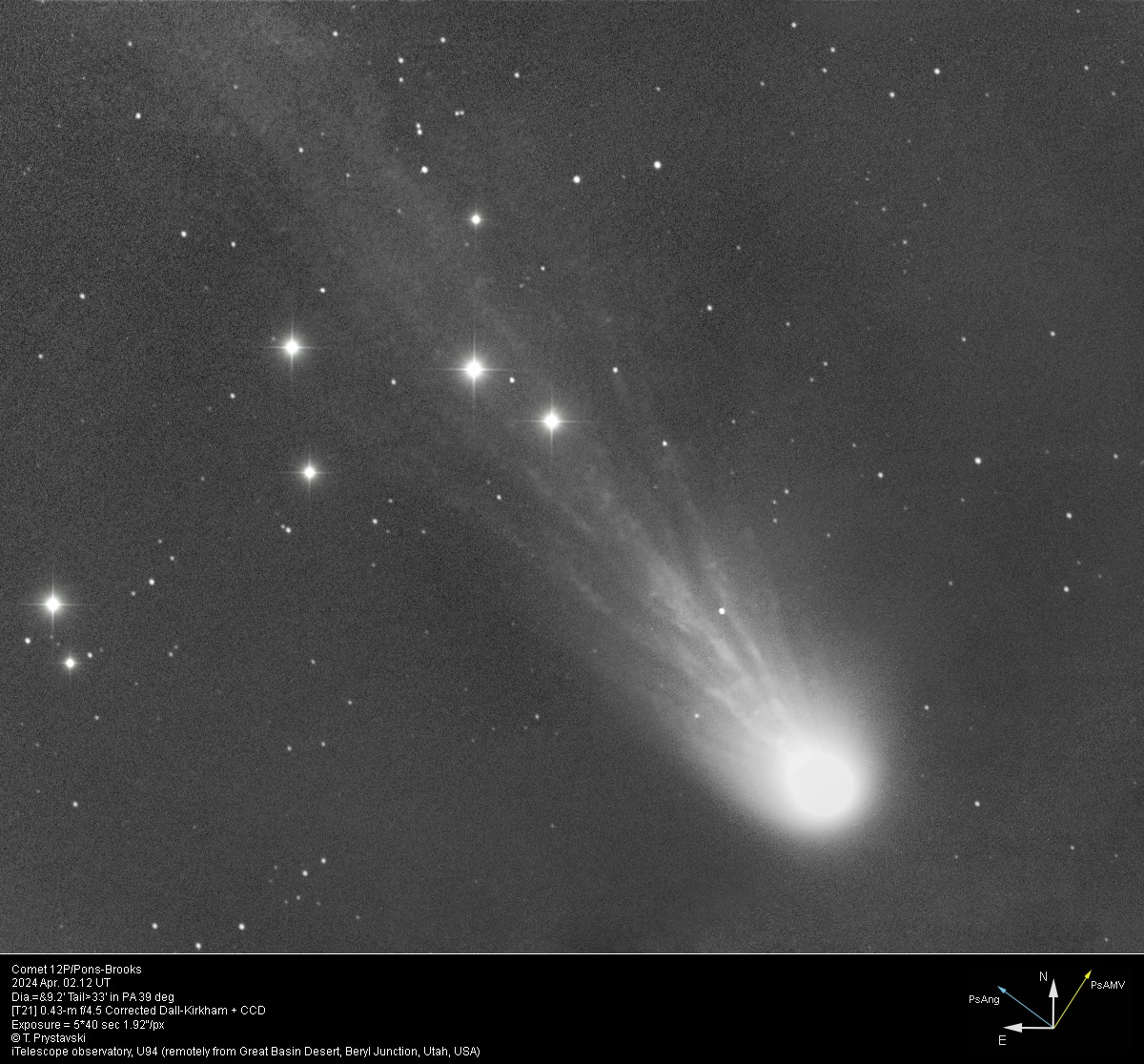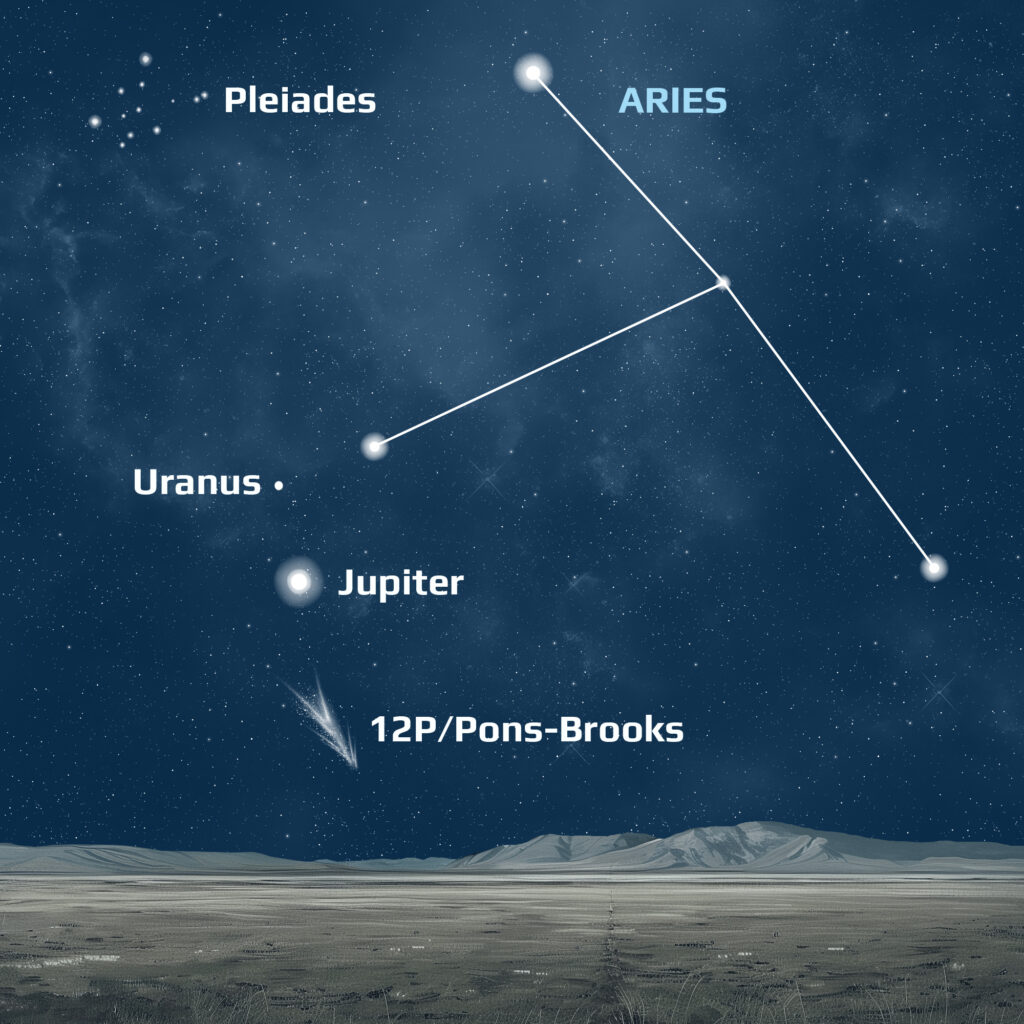The bright periodic comet Pons-Brooks (12P/Pons-Brooks) is approaching perihelion, and at the same time the conditions for its observations in our latitudes are rapidly deteriorating. Although its visible brilliance is gradually increasing, every evening it appears against the background of the twilight sky lower and lower above the horizon. However, in the final week of visibility, it seems that the comet decided to give us one last gift and increased its brightness by almost one stellar magnitude.
In July and November last year, this “tailed star” already demonstrated quite powerful flares, during which its brilliance increased by one and a half to two stellar magnitudes (i.e. 4-7 times), and then returned almost to the calculated values. Until April 2, the comet behaved almost according to forecasts: on that day, its brightness only slightly exceeded the 5th magnitude. But the very next day, several astronomers reported that this indicator had increased noticeably, and in the central region of the coma (the gas shell of the comet nucleus), a fairly large light condensation was visible — this often happens during cometary flares.

This unexpected event increases the chances of seeing Comet Pons-Brooks with the naked eye before its declination becomes less than solar and it disappears from the evening sky of the Northern Hemisphere. Now it is very easy to find it — Jupiter, which is the brightest star-shaped object in the sky in the evenings, will help us with this. Shortly after sunset, it can be seen above the western horizon. The comet should be searched to the right and slightly below it. On the evening of April 6, it will be located almost in the middle between Jupiter and the star Hamal (α Aries), shifting slightly more than a degree southward every next day.
On April 10, a rare “triple conjunction” of the comet, Moon, Jupiter and Uranus will take place, and three days later the “tailed guest” will be visible just 3° west (below) from the largest planet in the Solar System. This evening, at the end of the nautical twilight at the latitude of Kyiv, it will be possible to see it only 6° above the horizon. For observers of the south of Ukraine, it will be located about a degree higher.

Even if the comet’s flare lasts for more than a week, from mid-April we will no longer be able to see it with the naked eye — only with the help of astronomical instruments against the background of evening twilight. By the time it passes perihelion on April 21, it will move away from Jupiter by 8°, its angular distance from the Sun will slightly exceed 22°. On this day in Kyiv, it will disappear over the horizon when the sky is still too bright, and in Odesa, by the end of the nautical twilight, it will be at an altitude of less than 0.5°. Next, residents of the equatorial latitudes and the Southern Hemisphere will take over the baton of its observations. They will see the comet’s maximum approach to Earth to a distance of 1,546 AU (231 million km), which will occur on June 2, 2024. After that, she will start moving away from us and next time she will return back in 2095.
Follow us on Twitter to get the most interesting space news in time
https://twitter.com/ust_magazine


